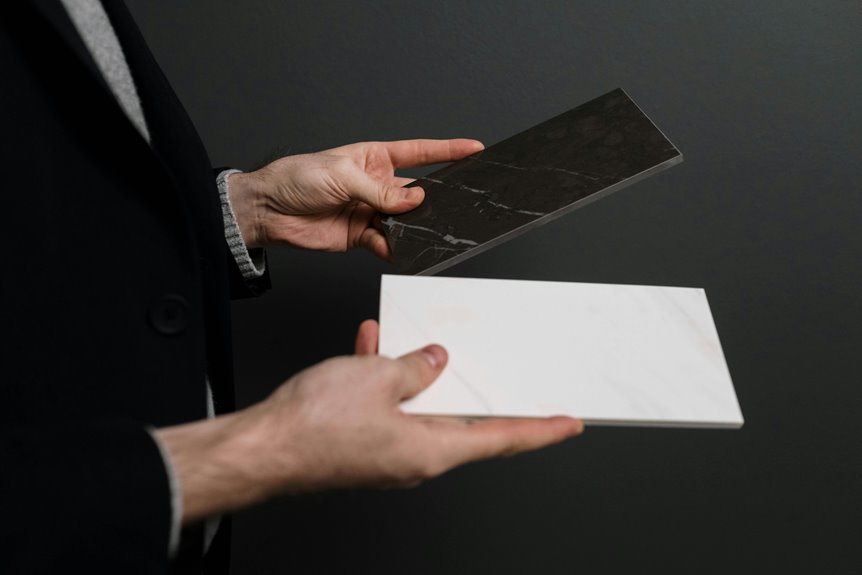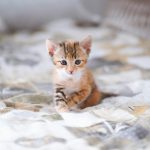If you want a sturdy, tightly woven fabric that holds up well and offers great print options, calico’s your go-to for bags, quilting, and home décor. But if you need something soft, breathable, and lightweight—perfect for baby clothes, summer wear, or test garments—muslin fits the bill. Both fabrics have unique strengths, so knowing their differences helps you pick the right one for your project. Keep exploring to find out which suits your needs best.
Table of Contents
Key Takeaways
- Calico is a tightly woven, durable cotton fabric with a stiff texture, while muslin is loosely woven, lightweight, and soft.
- Calico is ideal for sturdy projects like tote bags and upholstery; muslin suits breathable garments and baby products.
- Muslin’s open weave offers excellent airflow, making it perfect for summer clothing and linings.
- Calico is commonly printed and colorful, whereas muslin is usually plain and used for test garments or layering.
- Choose calico for structure and longevity; opt for muslin for softness, breathability, and easy manipulation.
Understanding the Basics of Calico Fabric
Calico fabric is a plain-woven cotton textile known for its durability and affordability. When you choose calico, you’re getting a sturdy material that holds up well under frequent use.
It’s often unbleached or lightly bleached, so it has a natural, off-white color, sometimes with small printed patterns. You’ll find calico popular in quilting, crafting, and even upholstery, thanks to its firm texture.
Because it’s tightly woven, calico resists wear and tear better than many other cotton fabrics. If you’re working on a project that needs a reliable base fabric without breaking the bank, calico fits the bill perfectly.
Plus, it’s easy to dye and print on, making it versatile for various creative uses.
Exploring the Characteristics of Muslin Fabric
Muslin stands out as a lightweight, loosely woven cotton fabric that offers a soft and breathable feel.
Muslin is a soft, breathable cotton fabric known for its light, airy weave and gentle texture.
When you work with muslin, you’ll notice its gentle texture makes it ideal for layering or draping. Its open weave allows excellent airflow, keeping things cool and comfortable.
You’ll find muslin comes in various weights, from sheer to more substantial, so you can pick the perfect option for your project.
Because it’s easy to dye and print on, muslin is popular for crafting, dressmaking, and home décor.
Plus, its natural cotton fibers make it gentle against the skin, which is why muslin is often used for baby products and medical gauze.
Key Differences Between Calico and Muslin
While both fabrics are made from cotton, you’ll find that calico and muslin differ markedly in texture, weave, and typical uses. Calico features a tighter weave and often sports printed patterns, giving it a stiffer feel. Muslin, on the other hand, is loosely woven, soft, and usually plain. These distinctions affect how you might choose between them for your projects.
| Feature | Calico | Muslin |
|---|---|---|
| Weave | Tight | Loose |
| Texture | Stiffer, rougher | Soft, breathable |
| Appearance | Printed or plain | Mostly plain |
Knowing these key differences helps you pick the fabric that suits your needs best.
Best Uses for Calico in Sewing Projects
You’ll find that calico’s durability and printed patterns make it ideal for a variety of sewing projects.
If you’re making tote bags, aprons, or cushion covers, calico holds up well and adds a charming, rustic look. It’s also perfect for quilting, where its colorful prints can bring vibrancy to your designs.
Because calico is sturdier than muslin, you can rely on it for home décor items like curtains or table runners. When you want your project to have structure and longevity, calico’s the go-to fabric.
Plus, if you enjoy crafting toys or dolls, calico’s texture and print options provide a fantastic base.
When to Choose Muslin for Your Creations
If your project calls for a lightweight, breathable fabric, muslin fits the bill perfectly. You’ll want to choose muslin when making garments like summer dresses, baby clothes, or breathable linings.
Its soft texture and airy weave keep you comfortable in warm weather. Muslin is also ideal for creating mock-ups or test garments, known as toiles, because it’s inexpensive and easy to sew.
Plus, muslin absorbs dye well, so it’s a great choice if you plan to customize your fabric with prints or colors. When you need a fabric that’s versatile, gentle on the skin, and easy to manipulate, muslin is the smart pick.
Just remember, it’s not as durable as calico, so avoid heavy-duty projects.
Frequently Asked Questions
Can Calico and Muslin Fabrics Be Machine Washed Safely?
You can machine wash both calico and muslin safely, but you should use cold water and a gentle cycle to prevent shrinking or damage. Always check the care label to guarantee the best results for your fabric.
Are Calico and Muslin Fabrics Environmentally Friendly?
Imagine planting a tree—both calico and muslin, made from cotton, carry nature’s gift. You’ll find they’re biodegradable and renewable, but how eco-friendly depends on farming practices and dyeing methods used during production.
Which Fabric Is Better for Printing Detailed Designs?
You’ll find calico better for printing detailed designs because its tighter weave holds ink more precisely, giving you sharper images. Muslin’s looser weave may blur fine details, so choose carefully based on your project’s needs.
Do Calico and Muslin Fabrics Shrink After the First Wash?
Imagine your fabric as a balloon—both calico and muslin tend to shrink after the first wash. So, you’ll want to pre-wash them to avoid surprises and keep your projects fitting just right.
Is Either Fabric Suitable for Making Reusable Face Masks?
You can use both calico and muslin for reusable face masks, but calico’s tighter weave offers better filtration. Just make sure to wash and dry them regularly to maintain effectiveness and comfort.
- The Use of Nonwovens in Construction and Civil Engineering - July 11, 2025
- The Use of Nonwovens in Construction and Civil Engineering - July 11, 2025
- The Use of Nonwovens in Construction and Civil Engineering - July 11, 2025







